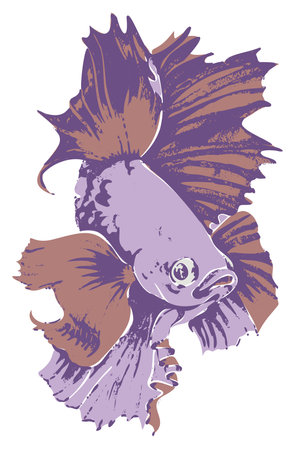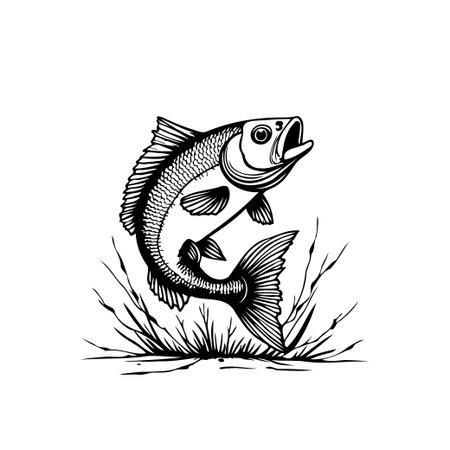Introduction to Englands Lesser-Known Rivers
Beyond the renowned chalk streams and bustling angling hotspots, England harbours a tapestry of hidden rivers that weave quietly through its countryside. These lesser-known waterways offer an enchanting escape from the crowds, where history and nature intertwine in captivating harmony. While the likes of the Test and Itchen draw anglers from far and wide, it is the secluded brooks and meandering tributaries—often overlooked by guidebooks—that truly capture the spirit of discovery. These secret rivers have witnessed centuries of change, shaping local communities and nurturing unique ecosystems along their banks. Steeped in folklore and brimming with native wildlife, they invite the adventurous fly fisher to look beyond the obvious, promising both solitude and a deeper connection to England’s rich aquatic heritage.
2. Selecting the Ideal Hidden Rivers for Fly Fishing
Venturing beyond England’s famed chalk streams, discovering hidden rivers offers a unique challenge and reward for seasoned fly anglers. To pinpoint the most promising stretches, it’s vital to break down several core criteria that distinguish prime fly fishing locations from the rest.
Key Criteria for Spotting Prime Locations
Water Clarity
In England’s lesser-known rivers, water clarity can vary dramatically due to agricultural runoff, rainfall, or local geology. Clearer water enables more precise presentation and easier observation of fish behaviour—an essential advantage when stalking wild trout or grayling. Look out for stretches upstream of villages and away from arable land, where natural filtration helps maintain clarity year-round.
Resident Species
The composition and abundance of resident species are a reliable indicator of river health. While brown trout remain the top quarry, many hidden rivers also harbour grayling, dace, or even wild chub. Understanding which species are present—and their size structure—will inform your choice of tackle and technique.
| River Feature | Likely Resident Species | Recommended Approach |
|---|---|---|
| Limestone tributaries | Brown trout, Grayling | Dry fly during hatches; nymphs in deeper runs |
| Silty lowland stretches | Dace, Chub | Small streamers; wet flies near cover |
| Moorland becks | Wild trout (smaller), occasional grayling | Tiny dries; stealthy approach crucial |
Seasonal Hatches
The rhythm of English rivers is set by their hatches. Lesser-known waters often boast untouched mayfly emergences in late spring or prolific olive hatches through summer and autumn. Researching local entomology—either by joining regional angling clubs or consulting Environment Agency surveys—can reveal when these hidden jewels truly come alive. Timing your trip to coincide with key hatches will dramatically increase your odds of success.
Summary Checklist for Hidden River Selection:
- Prioritise clear water sections upstream of farmland and urban areas.
- Investigate which species are locally abundant via club records or Environment Agency data.
- Match your visit to the seasonal emergence of dominant insects for maximum sport.
- Consider access rights: many hidden rivers in England require day tickets or syndicate membership.
Selecting the right river is both an art and a science. By combining technical understanding with on-the-ground research, you’ll unlock angling experiences that remain undiscovered by most visitors—setting yourself up for memorable days far from the tourist crowds.

3. Essential Gear and Local Fly Selection
When venturing off the beaten track to explore England’s hidden rivers, your choice of tackle can make or break your day on the water. English river conditions are famously diverse—from the gin-clear chalk streams of Hampshire to the peaty flows of Yorkshire’s dales. To maximise your chances, it’s crucial to tailor your gear and fly selection not only to the local environment but also to the unique character of these waterways.
Tackle Choices for English Rivers
For most English rivers, a lightweight rod in the 7ft to 9ft range with a 3wt or 4wt line is ideal, offering finesse and accuracy required for tight banks and wary wild trout. Pair this with a supple floating line and a fine leader, generally tapering down to 3X or even 5X for spooky fish in crystal waters. Reels needn’t be heavy—look for something with a smooth drag system, as native brown trout can put up a spirited fight in fast current.
Traditional British Fly Patterns
When it comes to fly selection, classic British patterns remain perennial favourites for good reason. The Greenwell’s Glory, Pheasant Tail Nymph, and Kite’s Imperial have proven their worth on English rivers for generations. Dry flies such as the Gray Wulff and Sedgehog work wonders during summer hatches, while spiders like the Partridge & Orange excel in slower stretches where trout rise softly.
Adapting to Local Entomology
A true edge comes from matching your flies to the local entomology—a skill that separates visiting anglers from those who consistently unlock secret stretches. Take time to observe insect activity before tying on; mayfly emergences dominate late spring, while olives and sedges are prevalent throughout summer. Don’t overlook terrestrials either: small black beetle or ant imitations can be devastating after windy days along overgrown banks.
Pro Tip: Engage with Local Anglers
The most effective way to refine your tackle setup and fly box is through conversations with local anglers or ghillies. They’ll steer you towards subtle variations that match resident bug life—often overlooked by outsiders—and offer advice on optimal presentation methods suited to each river’s quirks. By arming yourself with both classic British patterns and a willingness to adapt, you’ll blend tradition with tactical precision, ensuring every cast counts beyond the tourist trail.
4. Technique Adjustments for Undiscovered Waters
Fly fishing England’s lesser-known rivers demands more than the standard approach found on well-trodden beats. The unique blend of lower fishing pressure, intricate river structure, and the ever-capricious British weather compels anglers to adopt a flexible and tactical mindset. Here’s how these factors shape the art of fly fishing off the beaten path.
Fishing Pressure: Less Isn’t Always Easier
At first glance, hidden waters might seem forgiving due to sparse angler presence. However, fish in these environments often display heightened wariness, having evolved under natural predation rather than constant human interference. This requires:
- Stealthy Approaches: Move slowly, keep low, and minimise water disturbance.
- Longer Leaders: Opt for finer tippets and longer leaders to reduce visibility.
- Light Presentation: Perfect your cast to lay flies gently, mimicking natural drift.
River Structure: Reading Britain’s Subtle Currents
Unlike manicured chalk streams, many of England’s secret rivers feature tangled banks, undercut roots, and variable depths. Analysing structure is key to success:
| River Feature | Tactical Adjustment |
|---|---|
| Pocket Water | Short, accurate casts; high-stick nymphing; quick reactions |
| Overhanging Cover | Side-arm casting; roll casts; cautious wading to avoid spooking fish sheltering beneath vegetation |
| Silty Margins | Careful foot placement; slow movements to prevent silt clouds that alert trout or grayling |
The British Weather Factor: Adaptability Is Key
No discussion of English fly fishing is complete without addressing the weather. Sudden rain showers or unexpected sunshine can transform conditions rapidly. Tactical adjustments include:
- Fly Choice Flexibility: Carry a range of patterns—from emergers to terrestrials—to match changing insect activity.
- Dressing for Success: Waterproofs are essential; dress in muted tones to blend into shifting light and shadow.
- Timing Tactics: Fish actively during overcast spells when trout are less wary, or capitalise on evening hatches after a warm day.
Refined Dry-Fly Presentation: The English Touch
A hallmark of British fly fishing is the delicate dry-fly presentation required by discerning wild fish. On hidden rivers, this becomes even more critical—casting upstream with precision, using small flies (#16–#20), and matching the hatch as closely as possible distinguishes locals from visitors.
The Local Edge: Observational Skills
Success in England’s undiscovered waters is rarely about luck—it’s about reading subtle cues: rising fish dimples, faint insect swarms, or a slight change in current speed. Mastering these technical nuances transforms a day on a secret stretch into an authentic British angling experience beyond the tourist trail.
5. Respectful Approaches and River Etiquette
The Unwritten Code of English Fly Fishing
Venturing beyond the well-trodden angling hotspots into England’s hidden rivers brings with it not only the thrill of discovery, but also a responsibility to uphold the timeless etiquette that underpins rural fly fishing culture. Unlike more commercialised locations, these secluded waters are often cared for by local communities or private syndicates, making respect for tradition and environment paramount.
Permissions and Access: The Gatekeepers of Tranquillity
Securing permission is the first step in any respectful approach. Many lesser-known rivers in England run through private land, so always seek written consent from landowners or fishery managers before setting foot on the riverbank. A polite enquiry—whether by phone, letter, or in person—demonstrates not just courtesy but also an understanding of local customs. Never assume access, even if public footpaths run nearby, as fishing rights are often separately owned.
Catch-and-Release: Safeguarding Future Stocks
Preserving delicate river ecosystems hinges on best practice catch-and-release techniques. Always use barbless hooks to minimise harm, handle trout and grayling with wet hands, and return fish gently to the water without delay. Avoid fishing during periods of extreme heat or low flows when fish are most vulnerable. This mindful approach ensures that wild stocks remain robust for both future anglers and the health of the river itself.
Conservation Through Action: Leave No Trace
True stewardship goes beyond simply taking your litter home. Respect fences and gates, tread lightly on riverbanks to prevent erosion, and avoid disturbing wildlife such as nesting birds or grazing livestock. Where possible, participate in local conservation efforts—many English angling clubs organise regular river clean-ups or habitat restoration days. By engaging in these activities, you contribute to sustaining the very environments that make England’s hidden rivers so enchanting.
A Quiet Word: The Value of Local Knowledge
If you’re fortunate enough to meet local anglers while exploring off-the-beaten-path waters, take time to listen. Their advice on where—and how—to fish respectfully is invaluable. Sharing insights on fly selection or water conditions often comes hand-in-hand with gentle reminders about etiquette: a subtle nod to a culture built on mutual respect between angler, landowner, and river alike.
Local Insights: Engaging with Communities
To truly experience the magic of England’s hidden rivers, it’s crucial to look beyond the water and engage wholeheartedly with local communities. Building relationships with landowners, seasoned ghillies, or even the landlord at the village pub often unlocks access to private beats, treasured pools, and angling knowledge that never makes it into guidebooks. These alliances are not just about permissions—they are the key to learning secret flies that work on a misty morning or discovering when a quiet backwater comes alive with rising trout.
Strategy: Building Authentic Connections
Approaching locals with respect and genuine curiosity is essential. Start conversations at the local tackle shop or over a pint at the pub, asking for advice rather than demanding directions. Offer to share your own experiences, and show appreciation for their expertise. Remember, many English fisheries are still governed by tradition; a courteous introduction can open doors to stretches of river rarely seen by outsiders.
Collaborate with Ghillies and Guides
While hiring a ghillie might seem like an extravagance, these guardians of the river hold generations of wisdom. They know not only where fish lie but also understand the rhythms of each season and how best to approach wary wild fish. By forging relationships with local guides, you gain tactical insight—such as when to switch from dry fly to nymph or which classic patterns have stood the test of time on that particular stretch.
The Village Pub: An Angler’s Social Hub
No strategy for exploring England’s secret waters is complete without mentioning the village pub—a cornerstone of rural life. Here, over locally brewed ale, you’ll find stories swapped, tips shared, and perhaps even an invitation to fish a little-known section of river. Treat these encounters with respect and discretion; trust built in these settings can lead to lifelong friendships and privileged access far from the tourist trail.
Ultimately, blending technical skill with cultural awareness gives you an edge few visiting anglers possess. By immersing yourself in local traditions and nurturing genuine connections, you’ll not only discover England’s hidden rivers—you’ll become part of their enduring story.

